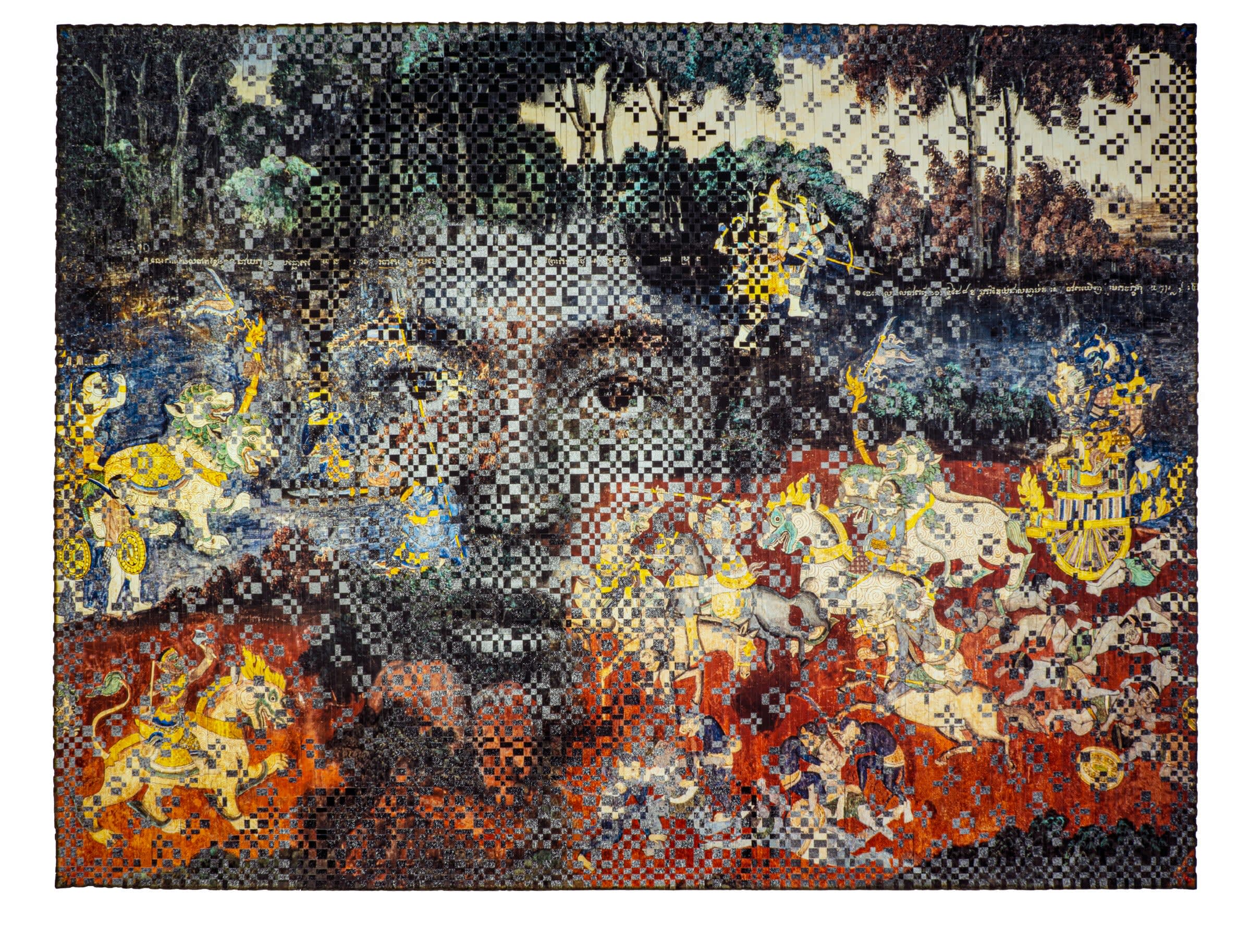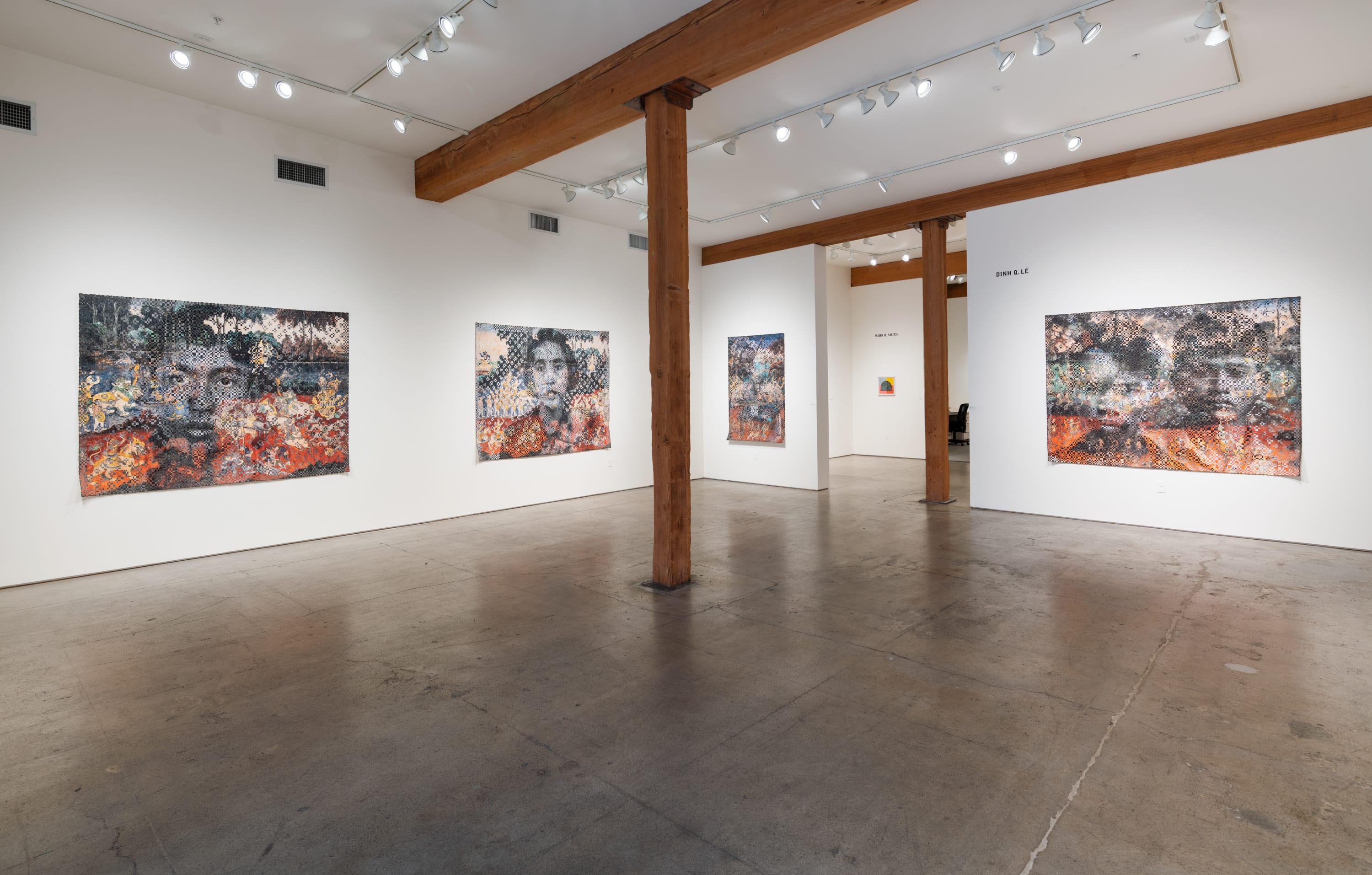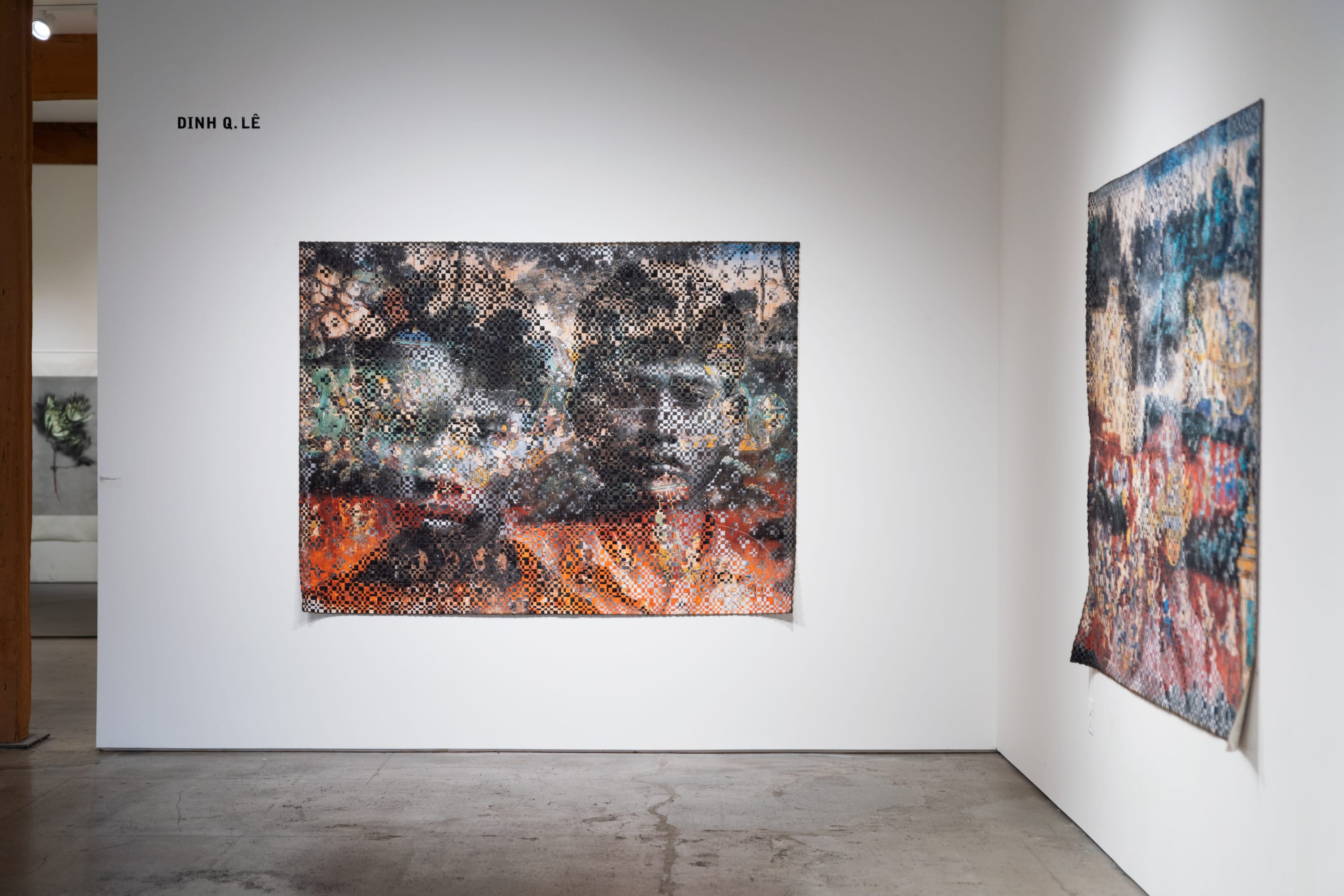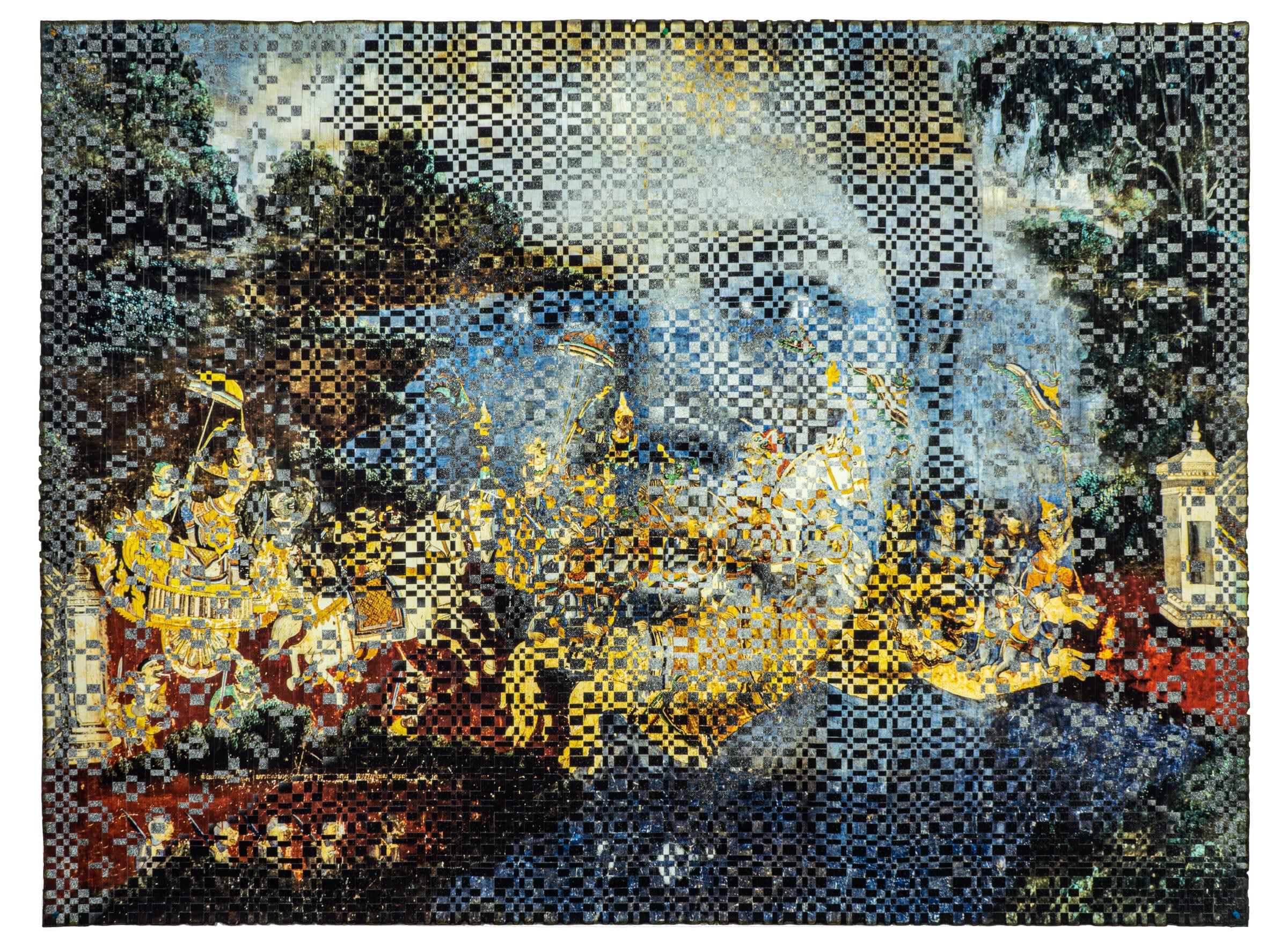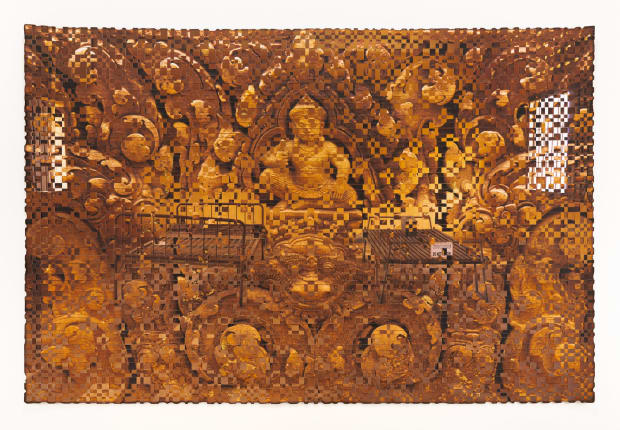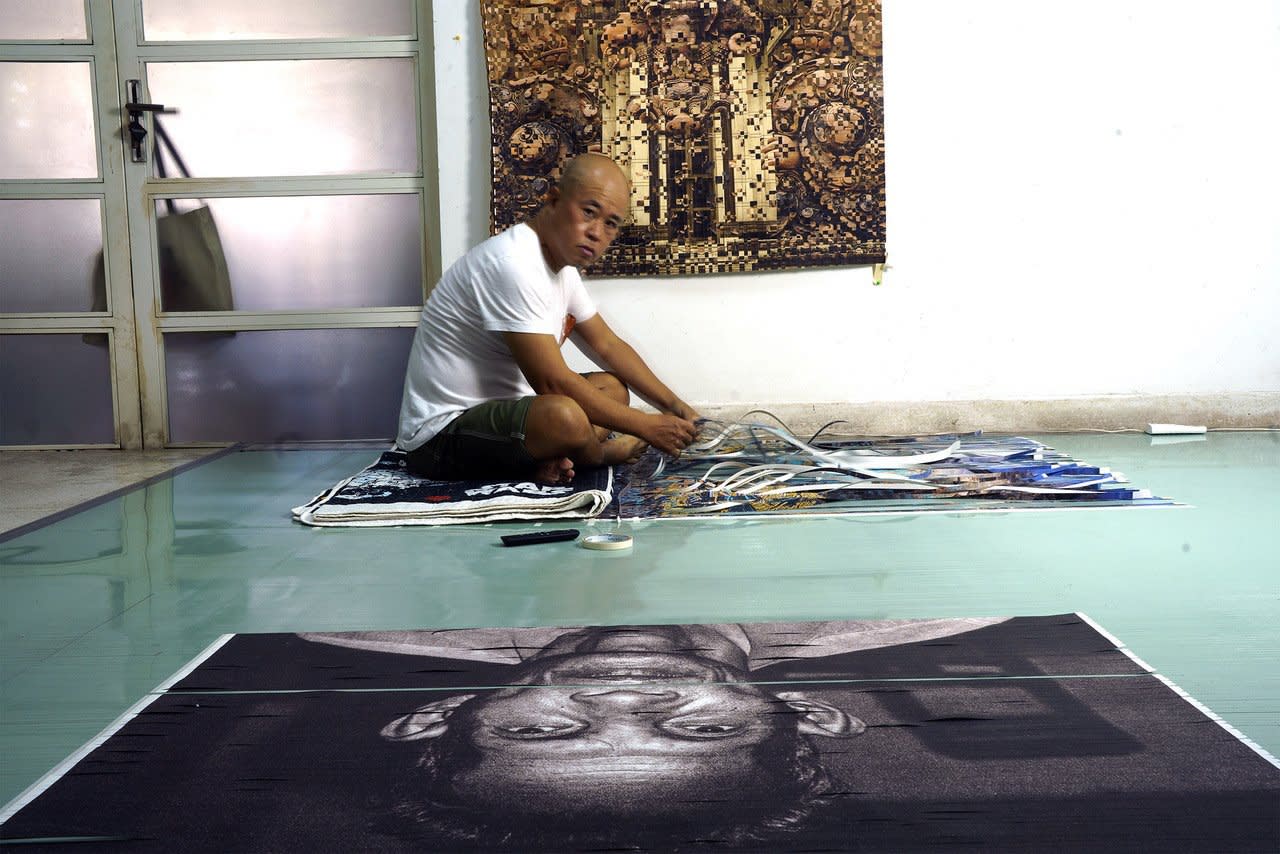-
Dinh Q. Lê | Cambodia Reamker
March 2 - April 29, 2023 -
 Cambodia Reamker #29, 2022Epson inkjet print on Epson double weight matte paper, acid free double sided tape and PH-neutral linen book tape65 x 86.5" artwork
Cambodia Reamker #29, 2022Epson inkjet print on Epson double weight matte paper, acid free double sided tape and PH-neutral linen book tape65 x 86.5" artwork
73 x 94.25" framed -
Elizabeth Leach Gallery is pleased to present Cambodia Reamker by Dinh Q. Lê featuring new photographic weavings that depict the Reamker, Cambodia’s version of the Ramayana, interwoven with portraits of prisoners from the Khmer Rouge’s notorious prison, Tuol Sleng.
-
 Installation view of Cambodia Reamker
Installation view of Cambodia Reamker -
Born in Ha Tien, a border town between Vietnam and Cambodia, Lê has long been interested in Cambodia’s recent history. In 1978, when the Khmer Rouge invaded and massacred many residents of Ha Tien, the artist’s family was forced to flee, first to Thailand and then finally to the United States. For many years, the artist has worked with the portraits of people who were tortured and killed by the Khmer Rouge. Dissatisfied with how these portraits depict the imprisoned individuals—at their worst and last moments—Lê’s artworks offer an alternative narrative drawn from Cambodia’s rich history.
-
 Cambodia Reamker #24, 2022Epson inkjet print on Epson double weight matte paper, acid free double sided tape and PH-neutral linen book tape65 x 86.5"
Cambodia Reamker #24, 2022Epson inkjet print on Epson double weight matte paper, acid free double sided tape and PH-neutral linen book tape65 x 86.5" -
 Dinh Q Lê, Cambodia Reamker #20, 2022 (installation view), Epson inkjet print on Epson double weight matte paper, acid free double sided tape and PH-neutral linen book tape, 64.5 x 43.5" unframed
Dinh Q Lê, Cambodia Reamker #20, 2022 (installation view), Epson inkjet print on Epson double weight matte paper, acid free double sided tape and PH-neutral linen book tape, 64.5 x 43.5" unframed -
 Detail image of Cambodia Reamker #20, 2022
Detail image of Cambodia Reamker #20, 2022 -
 Detail image of the Reamker fresco paintings (1903-1904) in the Silver Pagoda at the Cambodian Royal Palace in Phnom Penh
Detail image of the Reamker fresco paintings (1903-1904) in the Silver Pagoda at the Cambodian Royal Palace in Phnom Penh -
-
The result for Lê is a new body of work that physically interlaces these two narratives from the past—the rich cultural legacy of the Cambodian empire and the more recent, tragic history of the Khmer Rouge—in a way that is evocative of the Reamker itself, a metaphorical tale of the complex push-pull between good and evil in the world.
YouTube
-
 Installation view of Cambodia Reamker
Installation view of Cambodia Reamker -
 Cambodia Reamker #35, 2022-23Epson inkjet print on Epson double weight matte paper, acid free double sided tape and PH-neutral linen book tape65 x 86.5"
Cambodia Reamker #35, 2022-23Epson inkjet print on Epson double weight matte paper, acid free double sided tape and PH-neutral linen book tape65 x 86.5" -
Revisiting Monuments and Memorials, 2021
-
 Monuments and Memorials 9, 2021c-prints and linen tape43 x 64.5" unframed
Monuments and Memorials 9, 2021c-prints and linen tape43 x 64.5" unframed
49.5 x 71" framed -
-
 Dinh Q. Lê working in his studio. Image provided by the artist.
Dinh Q. Lê working in his studio. Image provided by the artist.That his photography-based works could be experienced in different ways—as sculptures, videos, and tapestries—is indicative of Lê’s use of photography. He uses it less as a means unto itself and more as a resource, “a matter to be transformed.” Zooming in and out, the audience put themselves into the position of the artist, occupying a space between the United States and Vietnam, between the imaginary and reality, constantly meditating between varying perspectives of history.
– JULIA TANSKI, "Dinh Q. Lê's 'The Thread of Memory and Other Photographs,” Art Asia Pacific, June 9, 2022
-
 Detail image of Cambodia Reamker #29, 2022
Detail image of Cambodia Reamker #29, 2022 -
Hear more about the making of Cambodia Reamker in this exclusive video interview with Dinh Q. Lê.
-
-
-

